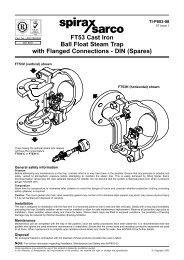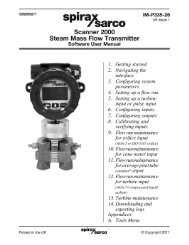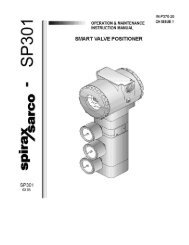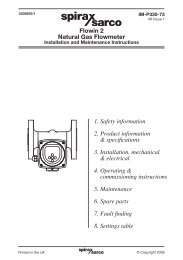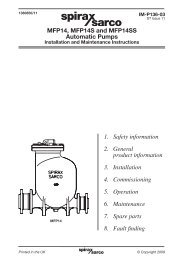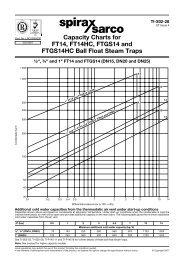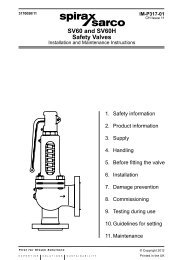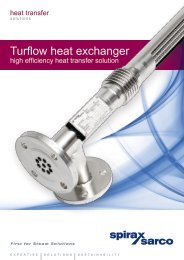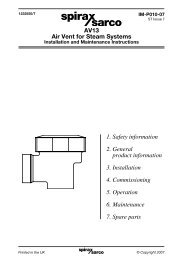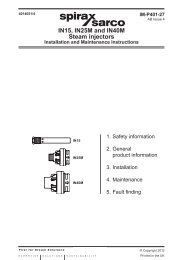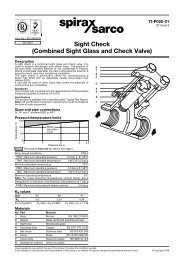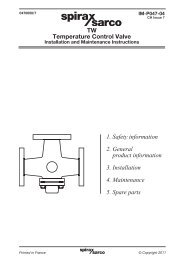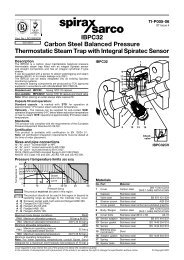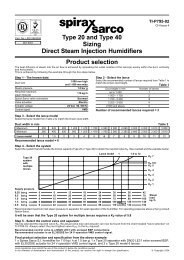Scanner 2000 Steam Mass Flow Transmitter ... - Spirax Sarco
Scanner 2000 Steam Mass Flow Transmitter ... - Spirax Sarco
Scanner 2000 Steam Mass Flow Transmitter ... - Spirax Sarco
Create successful ePaper yourself
Turn your PDF publications into a flip-book with our unique Google optimized e-Paper software.
Section 2 <strong>Scanner</strong> ® <strong>2000</strong> microEFM<br />
practices listed above.<br />
• Position the cone meter so that there are zero to five pipe diameters upstream of the meter and zero to<br />
three pipe diameters downstream of the meter.<br />
• Install the meter so that the static pressure tap is upstream of the differential pressure tap. The high side of<br />
the integral <strong>Scanner</strong> <strong>2000</strong> sensor must also be situated upstream.<br />
• Install shut-off valves directly on the DP meter pressure taps. Choose a shut-off valve that is rated for the<br />
ambient temperatures of the location and the operating pressure of the pipe in which it will be installed,<br />
and for use with dangerous or corrosive fluids or gases, if applicable. The valves must not affect the transmission<br />
of the differential pressure signal.<br />
Installation Procedure—Direct Mount to Orifice Meter or Cone Meter<br />
A <strong>Scanner</strong> <strong>2000</strong> can be mounted directly to an orifice meter or cone meter for liquid measurement using a<br />
side-port MVT, a block manifold and two football flange adapters (Figure 2.10). The setup of the meter run<br />
and plumbing configurations can vary widely, depending upon the challenges existing on location.<br />
44<br />
MVT with<br />
side ports Block<br />
manifold<br />
Adapter<br />
(2 typ.)<br />
Figure 2.10—Direct-mount liquid run installation (shown here with a cone meter). Downstream RTD is not<br />
shown.<br />
CAUTION When measuring liquid with a direct-mount <strong>Scanner</strong> <strong>2000</strong>, process connections must be<br />
parallel to the horizontal centerline of the meter, or below the centerline to eliminate air<br />
pockets.<br />
1. Verify that the meter is properly installed in the flow line (per manufacturer’s instructions).<br />
2. Screw a football flange adapter onto each meter pressure tap using pipe tape or pipe dope to seal the<br />
threads.



